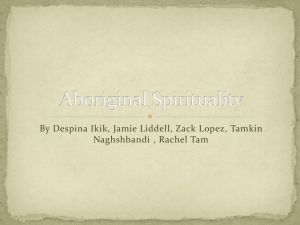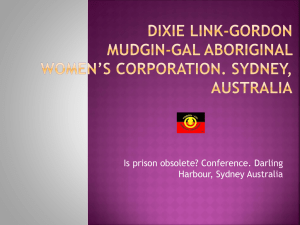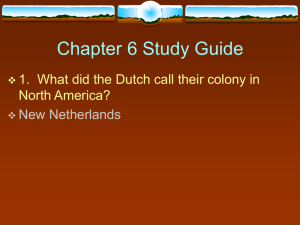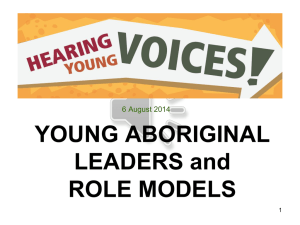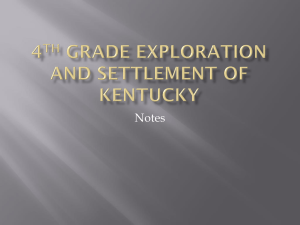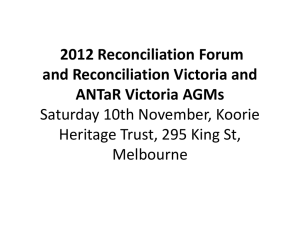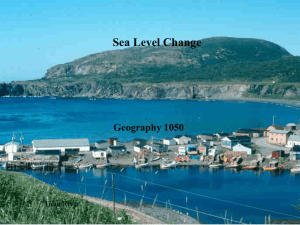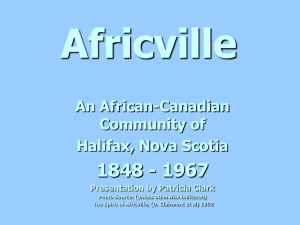Ch 4 SS pp 55 -64 Roots of our population
advertisement
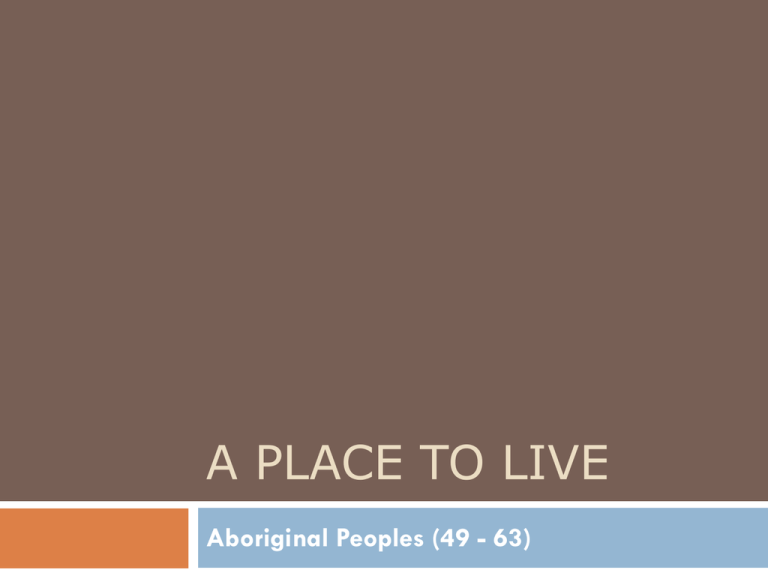
A PLACE TO LIVE Aboriginal Peoples (49 - 63) Population Patterns 1) Reviewing table 4.1 on p. 50, rank the provinces from highest population density to the lowest. 2) Reviewing table 4.2 on p. 50, match the following terms with the diagram: clustered, compact, loose-knit, linear. 3) Explain the differences between “urban center” and “rural area.” 4) Compare the terms “urban pull” and “rural push” what is the likely outcome of these factors? Population Patterns 5) Look at fig. 4.4 p. 51, what is the general trend shown in the graph? How does the population growth in Atlantic Canada compare to the rest of Canada? 6) What is outmigration? What is the destination of many who leave? 7) What was the name formerly given to Fredericton, N.B.? What was the cause of its growth in the early 1780’s? (5) The Innu The Innu are believed to be descendants of the Maritime Archaic people who lived 9000 - 3000 years ago They live in the area of the Quebec/Labrador peninsula French explorers classified this group into two subgroups 1) Montagnais 2) Naskapi The Innu Today, the Innu call their land Nitassinan, and do not recognize the political boundaries of Quebec and Labrador Algonquian Nations Lived in what is now Atlantic Canada Spent a lot of time hunting, fishing, trapping, and trading The Algonquian Nations included three nations: 1) Mi’kmaq ( NS, PEI, and parts of NL) 2) Passamaquoddy (in parts of NB) 3) Maliseet (in parts of NB) The Inuit The north of the Atlantic region was home to the Palaeoeskimo it is believed these groups crossed the Bering Strait from Siberia, reaching Labrador 3800 years ago. one group, the Dorset, disappeared about 1000 years ago. The Inuit Another group. The Thule, arrived in about 1300 and are the ancestors of today’s Labrador Inuit The Beothuk lived in Newfoundland hunted and fished along the coast and in the interior they were very susceptible to European diseases involved in conflicts with European settlers The Beothuk Beothuk became extinct when the last known member, Shawnandithit, died in 1829 of tuberculosis Effects of Contact The Aboriginal peoples taught the first Europeans how to survive in the harsh conditions posed by the environment of what is now Atlantic Canada. However, the Europeans were ethnocentric (believed that their culture and beliefs were better than those of the Aboriginal peoples) and did not appreciate or understand the Aboriginal peoples. Effects of Contact As a result, problems developed in parts of the region, one such problem was found in NS, NB, and PEI, as Aboriginal peoples became regulated by Canadian law and were forced off their native land/migration routes onto reserves. Today, Aboriginal peoples are negotiating claims with provincial and federal governments to reclaim the land natively used by their ancestors and the right to self-government Questions (p.55 - 56) 1) The term Aboriginal peoples is used to refer to who? 2) Different Aboriginal groups, while living in harmony with their environment, differed from each other in what ways? Name three. 3) When do some archaeologists believe that Aboriginal groups first migrated to the Atlantic Canadian region? Why? From where? Questions (p.55 - 56) 4) Using Fig. 4.7, what generalizations can be made about the migration of Aboriginal peoples from AD 500 to present? 5) For each group, list the following: original location Arrived in Atlantic Canada subgroups present location - Effects of Contact p.56 1) How did the aboriginal peoples help the Europeans when they first moved into the Atlantic region? Syrup 2) define ethnocentrism. 3) What was a problem which developed from this lack of understanding? Effects of Contact p.56 4) Why do Aboriginal leaders negotiate with provincial and federal governments today? Assembly of First Nations Chief Phil Fontaine > EARLY EUROPEAN SETTLEMENT Chapter 4 pp. 57-58 Social Studies Research Project Assignment: Research a culture which has contributed to the current population of Atlantic Canada. Guidelines: Individual assignment, but you may conduct research in pairs. 2 library classes, 1 classroom Format: w-book Social Studies Research Project Students are expected to: 1) make point form notes from at least 2 sources 2) Complete written display using information found 3) present book to the class Possible cultures: Innu Algonquian Nations Inuit Beothuk Acadians English Welsh Scottish African-Canadian others you may wish to explore Social Studies Research Project You will be evaluated on the following: 1) Research skills – how well you work in the library 5 marks 2) Presentation – oral presentation to class highlighting interesting aspects 5 marks 3) Final product – the actual w-book you pass in. Remember to include a bibliography or works sited list – 10 marks Total 20 marks for the project. 1 2 Title Student: Class Date: Map /Chart / Graph Student created 3 4 Fact Sheet Point form notes on topic Written Description Paragraph format 5 6 Artwork Picture related to topic Sources List all books / articles used Early European Settlement In the early 1600's, English and French settlers came to Atlantic Canada to tap its resources (fish and fur). During the seventeenth and eighteenth centuries, the British and French battled for control of Atlantic Canada. In 1763, the Treaty of Paris gave England control over the region. Early European Settlement British infantry 1756-1763 Early European Settlement Newfoundland was settled by English fishermen who would come to the area each spring. They fished all summer and went back to England before the start of fall weather. Gradually, they began to stay through the winter and set up permanent settlements. Early European Settlement Large numbers of Irish immigrants also helped to populate Newfoundland in the early 1700's. P. 57 1) Why did English and French settlers come to Atlantic Canada in the early 1600's? 2) In 1763, what did the Treaty of Paris do to Atlantic Canada? Acadians 1) Describe the population growth of the Acadians in the late 1600's. 2) In the early 1700's as the British gained control of the land, what did they ask the Acadian people to do? 3) What happened to the Acadian people in 1755? Why? Where did they go? The Deportation of the Acadians SETTLERS OF BRITISH ORIGIN PP 59-60 Settlers of British Origin 1) Describe the pattern of early settlement in early Newfoundland. 2) What happened to the lands in the Annapolis Valley formerly occupied by the Acadians? 3) Why did the Loyalists come to Canada? When? Where did they settle? Settlers of British Origin 4) What new colony was created because of the arrival of the Loyalists? 5) Why did the first Scottish settlers come to North America? When? Where did they settle? 6) Why did the first Irish settlers come to North America? When? Where did they settle? Settlers of British Origin Loyalists, drawing lots for Acadian lands. Settlers of British Origin 7) Why were the Irish different than most other settlers to Atlantic Canada? To which group did they have the most in common? Why? Irish Orphans AFRICAN – CANADIAN COMMUNITIES pp 61 - 62 African – Canadian Communities 1) Who is believed to be the first person of African descent to live in Canada? Where did he live, and what did he do for a living? 2) A) In the 1600’s – 1700’s, what were most people of African descent brought to North America to do? B) What other jobs did they have? 3) Use Fig. 4.16 to make a timeline illustrating the immigration and emigration by Africans. African – Canadian Communities 4) What is Africville? 5) Why was it so important to the people who lived there? 6) What happened to Africville? Why? Africville: Expropriating Black Nova Scotians | CBC Archives IMMIGRATION IN THE TWENTIETH CENTURY pp. 63 - 64 Immigration in the Twentieth Century 1) During the late 1800s and early 1900s, where were most immigrants encouraged to settle? By who? 2) During what two periods did Atlantic Canada receive larger waves of immigrants? 3) What is a war bride? Following WWII, what happened to these women? Immigration in the Twentieth Century 4) What is a refugee? During the 1990s, where did most refugees arriving in Canada come from? 5) Using the Fig 4.20, summarize the changes you see in the sources of immigration between 1956 and 1976. Chapter 4 Test Review Know the following definitions: out migration population density refugee population distribution rural push rural area urban pull urban center Be able to explain: Why PEI has a high population density and NL has a low one. Why the Acadians were expelled from Atlantic Canada. Chapter 4 Test Review Why did Irish immigrants come to Canada? What effect did contact with European settlers have on Aboriginal people already living in Atlantic Canada? What is Africville and why is it so important to African Canadians living in Atlantic Canada? What is a war bride and why did they immigrate to Canada?

